
Five Ten's Guide Tennie has been around for years. Like its predecessor, the latest version of this popular approach shoe is designed to accommodate anything from rough approaches to technical scrambling and even easy rock climbing. They're comfy and supportive on long hill walking days too. As you'd expect from any decent approach shoe, they are hard wearing, relatively stiff (compared to a trainer) and bridge the gap between trainers and boots.
Where they do differ from many other approach shoes is in the sole. This gives the Guide Tennie its own unique abilities, but also comes with some disadvantages, which I'll look at below. I've had them out over the last year through autumn, spring and summer, doing many activities from hillwalking through scrambling to some multipitch sport climbing - granted quite easy stuff. In some areas there is room for improvement, I felt, but in others they're about as good a shoe you'll find on the market.
Fit
The Guide Tennie comes in both male and female fit. I got it in a size UK 7; my normal street shoe size is around UK7/7.5. Size-wise I'd say they are exactly what I'd expect - in this instance, quite snug. One really nice thing about the fit of the Guide Tennie is that thanks to the effective, down-to-the-toe lacing it feels like you can really get the shoe tight against your foot, giving you very good sensitivity and confidence when scrambling or climbing. The Guide Tennie has good flat laces, that when tightened should stay secure the entire day. Laces that constantly need re-tied are a pain, and although it's easy to replace them, if I'd spent a decent amount of money on quality approach shoes then I'd expect them to come with quality laces!
Around the front of the foot the width is neither notably narrow nor unusually wide, but somewhere in the middle. Around the heel is very different - it's narrow, almost pinching your heel to stop any slipping or lift when climbing. You could probably heel hook with these shoes, cranking pretty hard, and be confident you wouldn't pull them off your feet (not that you're actually going to deploy a heel hook in approach shoes). The ankle cuff is deeply padded, but it doesn't rise very high, and in terms of support and protection for the heel and ankle I'd have preferred a bit more height here.
Sole
With a compression-molded EVA midsole, the Guide Tennie offers good foot support on rough ground, plus some shock absorption for pounding hard trails.
Arguably the most important aspect of an approach shoe, and certainly in this case the most interesting, the outsole on the Guide Tennie is what Five Ten call their "Dotty" tread. This is basically a series of flat rubber circles covering the entire sole of the shoe. Though it will already be familiar to anyone who wore old Guide Tennies it's an odd-looking tread and to be honest I wasn't very convinced when I first saw it. I don't live in a desert, after all, so a sole with a lot of flat rubber and very little depth in the tread would not be my first choice. After nearly a year of use I've got some opinions on it.

Firstly, and crucially, this sole simply is not very good on grass - especially when wet! For your typical UK crag approach or mountain day this sort of terrain is almost impossible to avoid, and when the ground gets steep and grassy I do find my feet slipping and I can't feel completely confident in my foot placements. On the other hand, on rock the Guide Tennie performs exceptionally well, to the point where I'd happily climb easy pitches in them. On long lower grade routes I've used them all the way, in preference to rock shoes. This isn't all to do with the tread; it's a relatively stiff sole too, and coupled with a small section of flat rubber near the inside toe it's great for edgeing.
The real secret weapon though is the material on the sole, Five Ten's very own C4 stealth rubber. I've used many different Five Ten rock shoes before and have always been a fan of this rubber, so getting it on an approach shoe was great. It's just as sticky as you would expect - the tradeoff being of course that it will inevitably wear faster than a harder compound. This is the only approach shoe I've worn in which I'm realistically going to be smearing, and really trusting it. The Guide Tennies have a considerable size of rand which comes in very useful for smearing, stuffing into cracks and just generally protecting the upper of the shoe from wear while you're out battering them about.
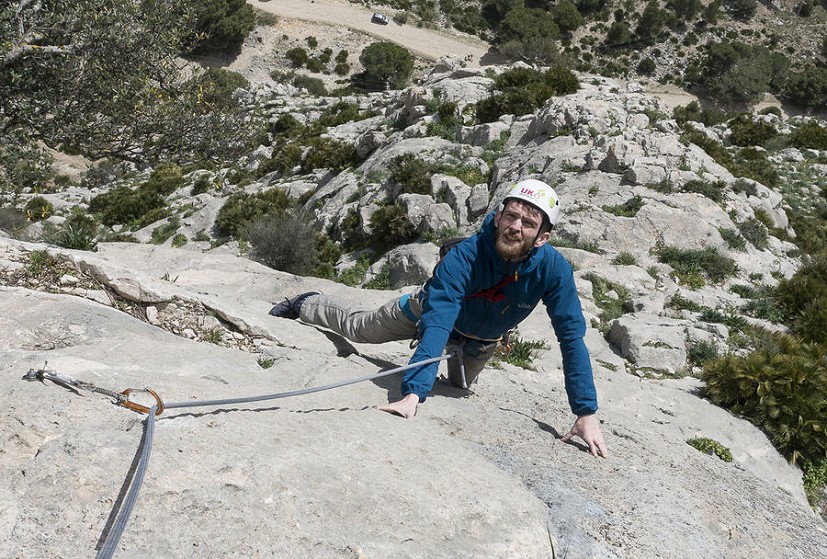
Uppers
Coming in a choice of different (all quite subdued) colours, the upper on the Guide Tennie is constructing using suede and synthetic material. It seems reasonably hard wearing, even after a lot of scrambling and easy climbing. The shoe can take some water, but I wouldn't go trudging through extremely boggy ground - you'll probably end up with wet feet. Also seeing as it's suede it's not ideal in the rain; these shoes are best saved for the dry weather they were clearly designed for.
Overall
The Guide Tennie is a great shoe for steep rocky approaches, technical scrambling or easy climbing. They're not so good on anything wet, such as steep grass or boggy terrain, so choose the days and walks on which you use them wisely. They are good in terms of all-day comfort, so big days out in the hills (assuming it's not raining) they handle well. My pair of size 7 comes in at just 752g, which is quite light for a supportive approach shoe. Given the overall quality, the price of around £100 is good value too
Five Ten say:
The Guide Tennie's hand-ground beveled climbing toe delivers precision-edging power and the Dotty™ tread coupled with Stealth® C4™ guarantees unrivaled traction on rock. An ergonomic last design, mesh lining and compression-molded midsole make the Guide Tennie comfortable when hiking long miles or engaging in technical scrambling and climbing. The durable suede leather upper provides water-resistance while remaining breathable on warm days.



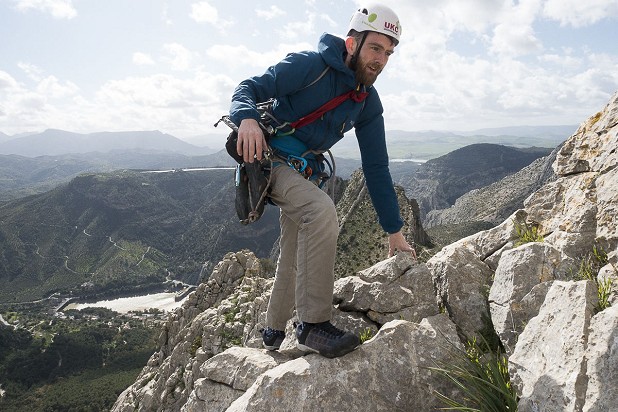
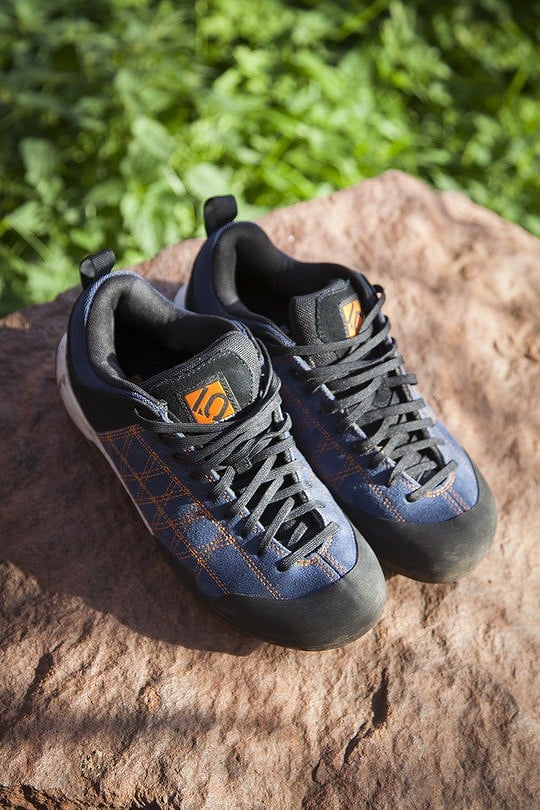
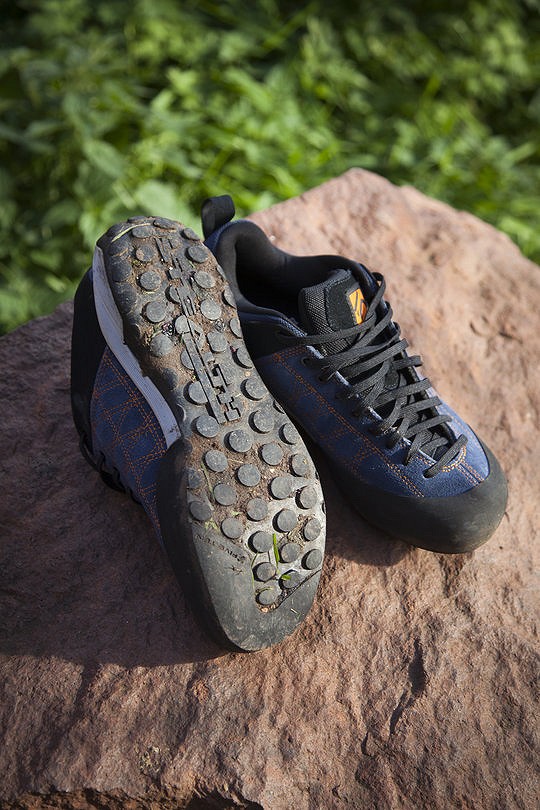
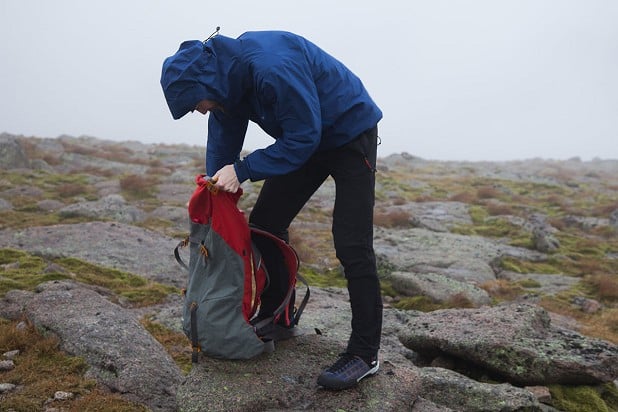
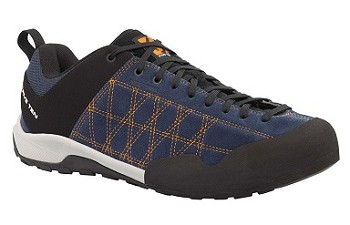

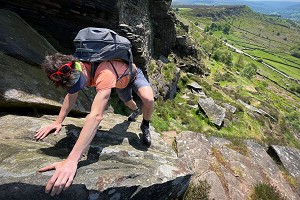



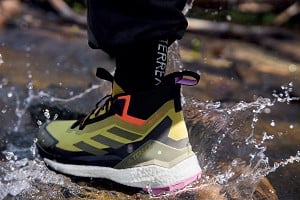

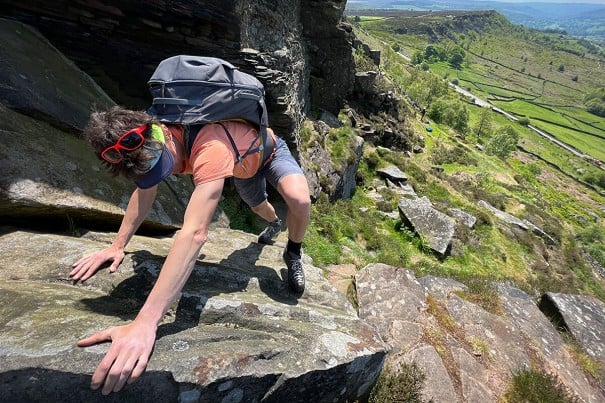
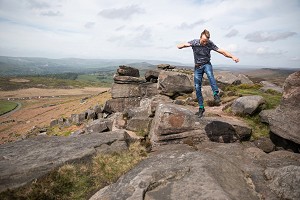



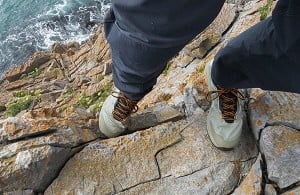
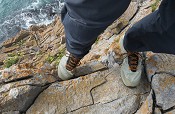
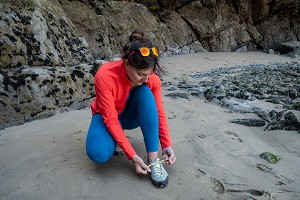
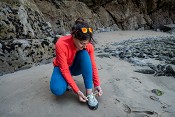
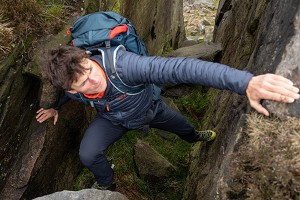

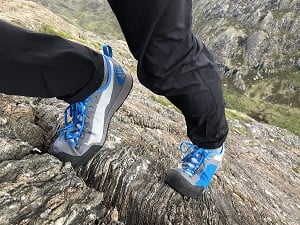
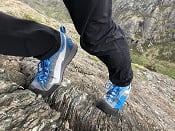
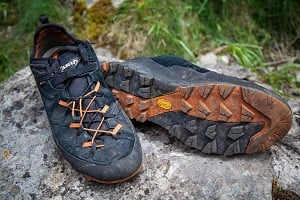





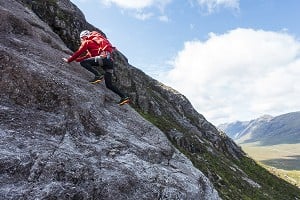



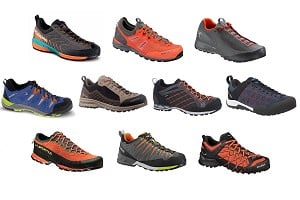
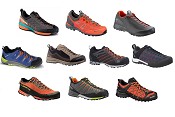
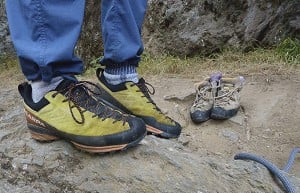
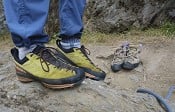
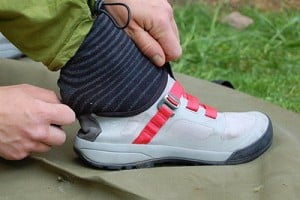
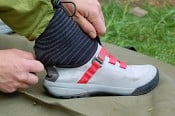
Comments
The big question in my mind is; are they better made than the old versions which would almost fall to bits in your hands as soon as you get them out of the box?
I've had some of the old versions for 8 years. They've had a hammering - both scrambling and as approach shoes while bouldering. They're still in great working order.
My only beef is that I've prefer them to have more grip on the heel, for descending.
Think gethin was talking about the old new version, not the old, old version ;)
...and don't expect them to last very long. Mine haven't been very durable (unlike the old ones which lasted well).
My old, old ones are lasting well!